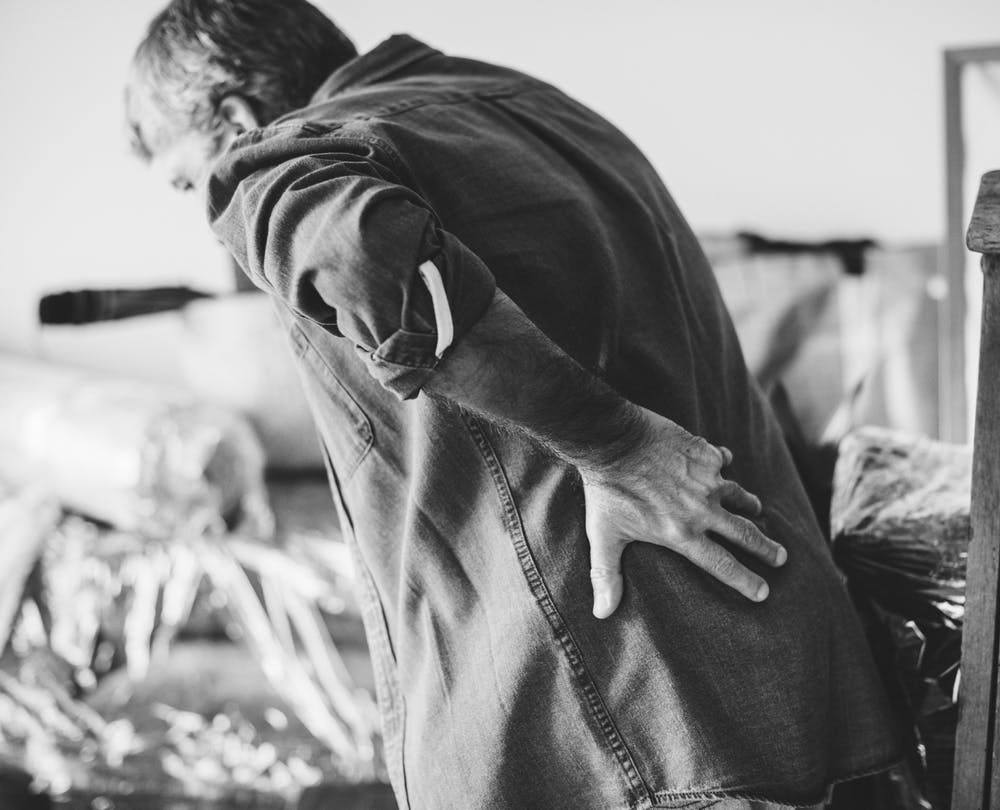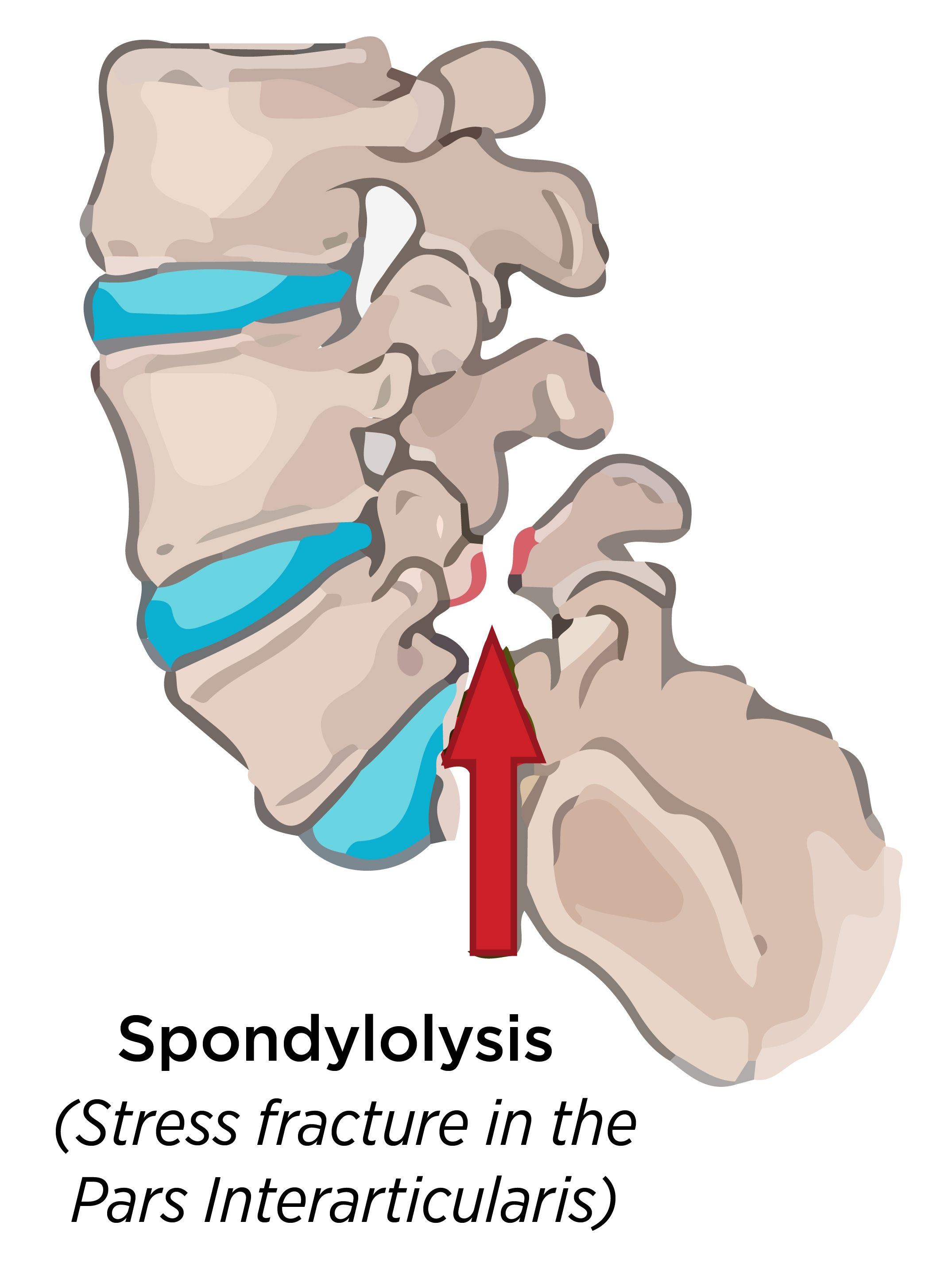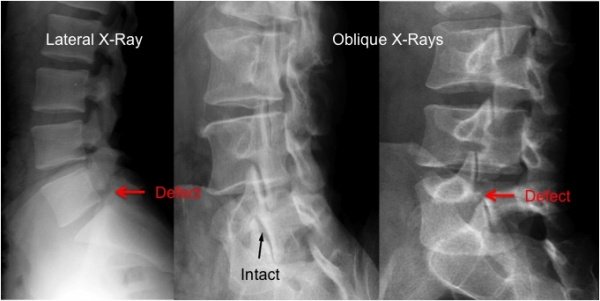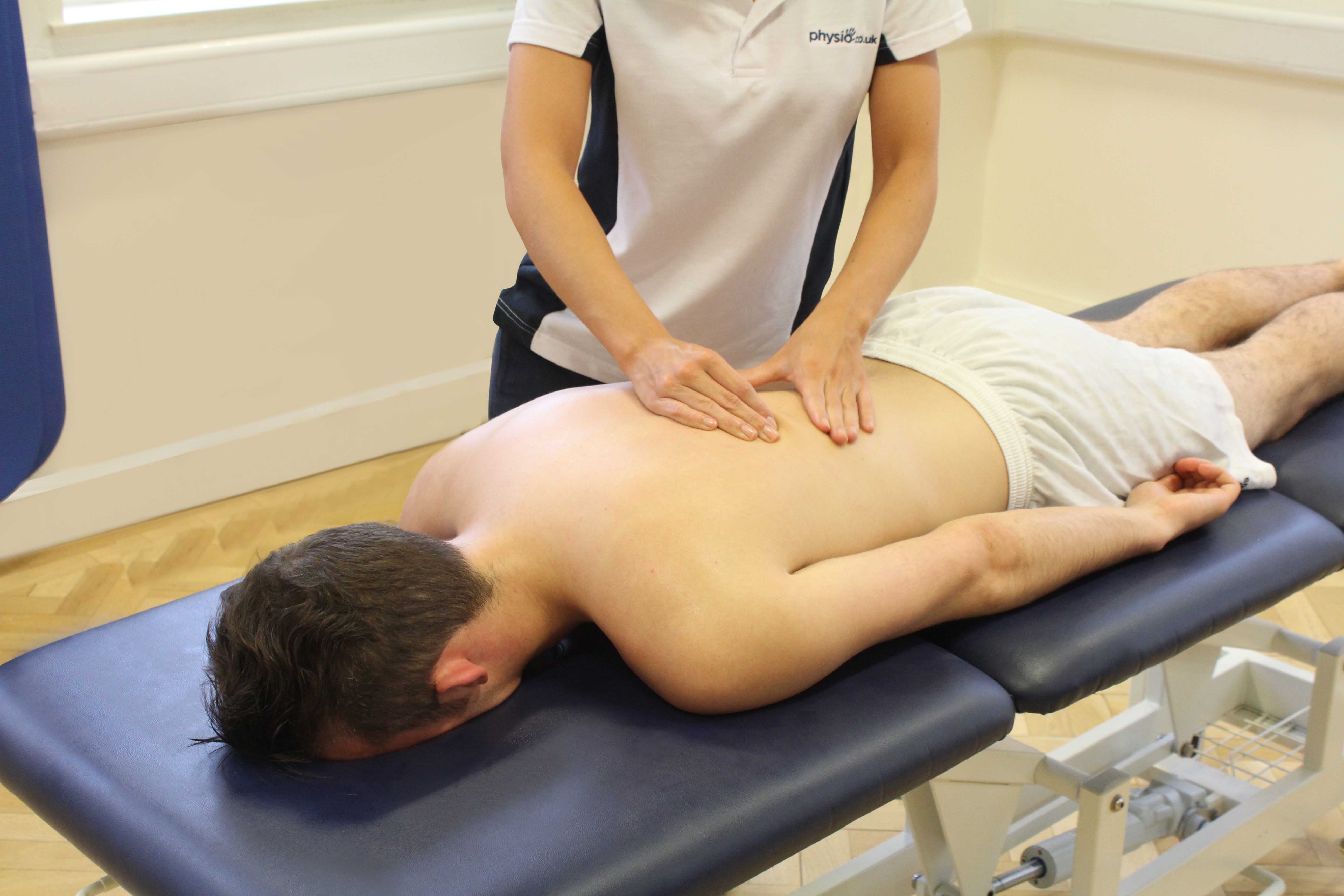nalco group
bone, muscle & joint pain physio
BOOK NOW / WHATSAPP ABOUT YOUR PAIN OR INJURY
- ORCHARD 400 Orchard Road #12-12 Singapore 238875
- TAMPINES 9 Tampines Grande #01-20 Singapore 528735
- SERANGOON 265 Serangoon Central Drive #04-269 Singapore 550265
Home > Blog > Physiotherapy > Conditions > Spinal Physiotherapy > Spondylolysis Physiotherapy
Spondylolysis Physiotherapy

Spondylolysis (spon-dee-low-lye-sis) refers to a painful stress fracture of a section of the lumbar spine; most usually is the fifth vertebrae of the spine. The injury can occur on the left, the right, or both sides of the vertebrae.
Spondylolysis occurs in up to 11.5% of the general population in the United States, and is most frequently seen in young males. Spondylolysis is a common cause of low back pain experienced in late childhood and adolescence.
Highly active teens, both boys and girls who engage in activities that require lifting heavy loads, repeated backward bending of the back, or twisting of the trunk, are most at risk for spondylolysis, including athletes participating in activities like
- football
- hockey
- gymnastics
- dance
Fortunately, only a small percentage of cases of spondylolysis require surgery, and 85% to 90% of young patients recover in 3 to 6 months with proper treatment.
Spondylolisthesis (spon-dee-low-lis-thee-sis) describes the forward slippage of a vertebrae over the vertebrae beneath it. Because the mechanism of injury, age of the patient, symptoms, and treatment are similar for both conditions, spondylolysis and spondylolesthesis are often described together.
Our senior physiotherapists provide
- education
- pain relief and reduction
- activity modification
- cross-training
to aid healing for patients with these conditions. We can help you increase your spine and leg flexibility, strengthen your core muscles, and return to your sport, work, and recreational activities without a recurrence of symptoms.
What are Stress Fractures of the Lumbar Spine?
Spondylolysis is a stress fracture of the pars interarticularis, part of the bony ring that connects the front part of the spinal column to its back portion.
Specifically, the fracture occurs between the spinous process (bony protrusion that sticks out the back of the spine) and the transverse process (bony protrusion that sticks out of the side of the spine). Excessive strain on the lumbar vertebrae due to repetitive activities in a growing child can cause injury to the vertebrae, resulting in low back pain.
Spondylolisthesis is the forward slip of a defective, unstable vertebrae.
There are five grades of slips, with grade I being the smallest amount of slip and grade V being a slip of 100%. Nonsurgical management is most successful with patients who have a defect on only 1 side of the vertebrae and those patients with a grade II or less slip. Young athletes whose adolescent growth spurt has not yet occurred are at greater risk for continued slippage and are monitored until they stop growing.

Key points to understand about spondylolysis and spondylolisthesis:
- Early detection and proper diagnosis of these conditions is important because return to sport or an active lifestyle can occur within 3 to 6 months with early diagnosis. With prolonged symptoms and a delayed diagnosis, healing may take up to a year.
- The majority of symptoms resolve with rest, with or without the use of a back brace or activity modifications.
- Surgery may be indicated when conservative treatment of greater than 6 months fails and debilitating symptoms persist.
- Spondylolysis and spondylolisthesis need to be ruled out in a young athlete who is experiencing low back pain for more than a few weeks. Active young athletes who participate in sports, such as football, hockey, gymnastics, and dance are at the greatest risk of developing the conditions, especially while growing.
- A negative x-ray reading requires additional imaging to rule out early injury to the vertebrae if clinical exam findings suggest a high probability of spondylolysis.
- Spondylolysis and spondylolisthesis are not a major cause of low back pain in adults, except in high-level athletes engaging in high-risk sports.
Signs and Symptoms
Spondylolysis may be present if you are experiencing:
- Low back pain with or without buttock or leg pain (If leg pain is present, it radiates into the thigh, but generally not below the knee.)
- Muscle spasms in your low back, buttocks, and thighs
- Difficulty or pain with walking or prolonged standing
- Symptoms that are relieved by sitting, slouching, or bending forward
- Pain with sports or manual labor
- Pain with bending backwards, twisting the spine, or with throwing
- Decreased flexibility of the leg muscles
How Is It Diagnosed?
Our senior physiotherapists will conduct a thorough evaluation that includes taking your health history.
We may ask:
- How long you have had the pain, and whether it came on suddenly or gradually
- If the pain occurs with activity or at rest, or during the day or night
- What activities or positions make the pain better or worse
- If you engage in high-risk activities that may cause injury to your vertebrae
- If you can point with 1 finger to the area on your back that is painful
- If you are having any other symptoms, such as fever, chills, or night sweats
- If you have difficulty maintaining control over your bowel and bladder
Additionally, we will perform objective tests and measures to identify movement, flexibility, or strength factors that may be contributing to your pain. Specifically, we may watch you walk, have you bend forward to touch your toes, bend back as far as you can, stand on 1 leg and bend back, and turn your trunk from side to side.
We will assess your leg and spine flexibility as well as your core strength, and ask you if the testing changes your symptoms. We may gently press areas of your back to see if they are painful. All the information gathered helps determine the cause of your pain and the best treatment to resolve your symptoms.
Diagnosing spondylolysis and spondylolisthesis can be challenging.
If stress fracture is suspected, we will refer you to an orthopedist or sports medicine physician familiar with back injuries. The physician may order further imaging tests to confirm the diagnosis and rule out other spine conditions.

how our senior physiotherapists can help you
In the beginning, when you are in pain and having difficulty performing your normal daily routine, we can:
- Show you how to rest the injured vertebrae, use lumbar bracing, modify your activities, and avoid painful movements
- Help you reduce and manage your pain symptoms
- Help you maintain fitness while healing, through pain-free cross-training, such as aquatic therapy
- Initiate symptom-free hamstring stretching and activation of your core muscles, either in or out of a back brace
When you are pain free, and the healing of your injured structures has begun, your physical therapist can help you:
- Improve the flexibility of your hip and leg muscles
- Improve your core and leg strength
- Improve your spine flexibility
- Prepare for a return to sport or work activities by improving your overall fitness levels
- Begin a gradual progression of higher-risk movements, such as back extension and trunk rotation to reduce the chance of reinjury

